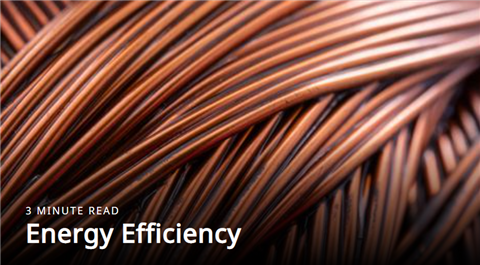Chris Callander looks at how a motor's efficiency can be improved as part of a repair or refurbishment and highlights some things you should consider.

A study carried out jointly by the Association of Electrical & Mechanical Trades (AEMT) and the American Association – the Electrical Apparatus Service Association (EASA) – has shown that motor efficiency can widely be maintained when a repair is carried out to a defined set of standards. The findings of the 2019 study, which have been published in a paper titled 'The Effect of Repair/Rewinding on Motor Efficiency', established that efficiency was maintained on repairs to current machines up to IE3 efficiency. This guide has been incorporated into the latest international repair standard IEC 60034:23:2019 and the latest American ANSI/EASA standard AR100.
There are, however, some circumstances under which the efficiency of a motor can actually be improved by refurbishment and rewinding. This generally applies to older, less efficient motors and the decision to repair rather than replace typically involves a broader range of factors than simply to improve efficiency.
Generally, the most effective way to improve a motor's efficiency is to add more copper to its coils, as James Stephens, Sales Director at Preformed Windings, explains: "It is often possible to add more copper to a set of coils, or more specifically, increase the copper cross-sectional area. This is achieved through the very tight tolerances we can manufacture modern coils to and the ability of state-of-the-art CAD systems to optimise coil design.
"This has several benefits such as reducing the coil's resistance, increasing the potential output and reducing the operating temperature of the machine, which can increase an asset's life.
It is important to understand that adding more copper will affect other characteristics in a motor. These may require the wider system to be adapted, according to Mathis Menzel, Managing Director at Menzel Elektromotoren: "Adding more copper into a machine will affect not only efficiency but also other parameters. You should expect an increase of inrush-current – which might be in conflict with existing protective measures".
INSULATION ADVANCES
The ability to increase the amount of copper in a motor has been supported by advancements in insulation materials' which means that less insulation is required, and therefore space in the motors' slots becomes available. James Stephens continues: "The thickness of insulation needed for various voltage systems has significantly decreased over the years. We are often asked to optimise the design of the insulation system, and modern insulation systems can offer 15% reductions in thickness. As this is on the outside of the coil, the effect on the copper cross-sectional area can be greater still.
"These thinner insulations assist with heat dissipation and again can offer both an increased asset life and improved efficiency of the coils."
Martin Wagner, Project Manager High Voltage Motors at Menzel Elektromotoren, points out that care is needed when comparing pre- and post-repair efficiency levels in a motor: "Efficiency should not be compared simply by looking at a motor's datasheets. Before a 2007 update of the IEC / EN 60034-2-1 standard, which defines methods of determining a rotating machine's efficiency, efficiency figures were more generous due to how certain effects could be 'calculated out'. Efficiency levels could previously be calculated with smaller additional losses than today – a standard 0.5% of absorbed power, regardless of the motor output.
"Since the 2007 update, the methods are much stricter. Now stray load losses have to be determined by a factor that reflects the motor's output, ranging from 0.5% (≤1MW) to 2.5% (≥10MW). So to avoid potentially misleading comparisons calculated from individual losses, efficiency should be measured directly at nominal load."
REPAIR OR REPLACE?
The decision of whether to repair or replace a motor typically involves several factors. These can include cost, the availability of a suitable replacement, system compatibility and, of course, efficiency. So, while increased efficiency is possible in certain circumstances, it isn't often the only reason to carry out a motor repair. If efficiency is one advantage you are looking for from your motor refurbishment, it may well be available, but you need to take care when calculating the actual benefits you are set to gain.
www.menzel-motors.com
www.preformedwindings.com